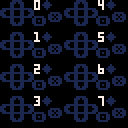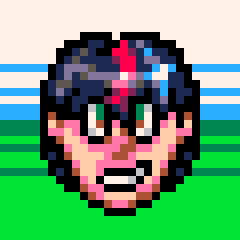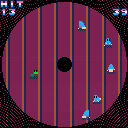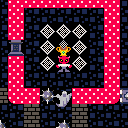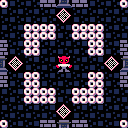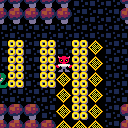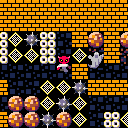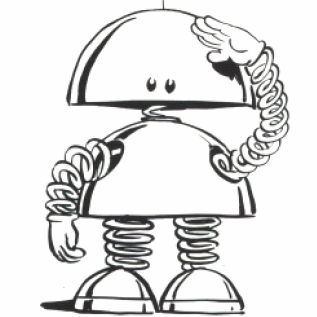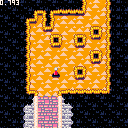I cannot successfully paste sprites in the Education Edition in either Chrome or Firefox.
Reproduction steps
- Go to https://www.pico-8-edu.com/
- Hit escape
- Click the sprite editor tab
- Draw a red cross in sprite 1
- Press ctrl+c. See "copied 1x1 sprites"
- Select sprite 2
- Press ctrl+v. See "pasted 1x1 sprites"
Although the text "pasted 1x1 sprites" appears, sprite 2 remains blank
Reproduction 2
- Go to https://www.pico-8-edu.com/
- Hit escape
- Click the sprite editor tab
- Fill sprite 1 red
- Fill sprite 2 blue
- Select sprite 1
- Press ctrl+c.
- Click the code editor tab
- Press ctrl+v. Observe pasted text is mostly 8s (for red).
- Click the sprite editor tab
- Select sprite 2
- Press ctrl+v(!). Observe sprite is unchanged. (EDITED - I had this wrong originally.)
- Click the code editor tab
- Press ctrl+v. Observe pasted text is mostly Cs (for blue)!

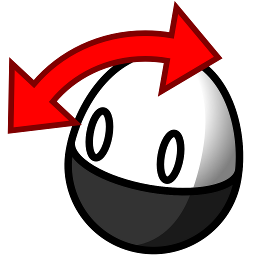
I've bundled up my improvements for the gamepad problems in HTML exports I described over in another thread as a plate.
Features
- Full Dpad support.
- Gamepads are only assigned to players when they first press a button. This way if you have multiple gamepads you aren't stuck with whatever order the browser decides to assign them to P1, P2, etc.
Usage
- Download the release of Nettie's Gamepad from github.
- Unzip.
- Go to the PICO-8 plates folder. (Run FOLDER in PICO-8 to open the carts folder, go up one level, the plates folder should be alongside.)
- Copy netties_gamepad.html into the plates folder.
- Load up your game in PICO-8.
- Export with
EXPORT YOURGAME.HTML -P NETTIES_GAMEPAD
I've got two big frustrations with gamepad support in HTML exported games and the BBS. The following is based on testing in Chrome on Windows and Mac using an XBox 360 Wireless Controller and a Nintendo Switch Pro Controller. I'm using this test app for everything following.
D-pad does not function as direction inputs
When exported to HTML or uploaded to the BBS, d-pads are either ignored or treated as extra pause buttons. (It seems they are ignored on the HTML export and behave as pause buttons on the BBS?) The gamepad browser API supports other controller layouts but is designed around common modern controllers, and it has a concept of the "standard gamepad" canonical device, which allocates buttons 12, 13, 14 and 15 to up, down, left and right. I would be great if the D-pad was supported here, by mapping these buttons to player direction inputs, either in addition to or instead of the analog stick.


This is a demake of the infuriating "Beaver Bother" minigame from Donkey Kong 64. The minigame was a particular source of torment to Hbomberguy, a YouTuber who recently ran a wildly successfully charity livestream of him completing Donkey Kong 64 to raise money for the UK charity Mermaids, who support trans children and their parents. I created this to celebrate.
For everyone unfamiliar with PICO-8, the [O] button is Z on the keyboard and the [X] button is X.
It's still not quite there, but it's playable and almost as frustrating as the original so I think it's worth sharing.
TODO:
There's not much gameplay here at the moment - just wander around the maze. It's mostly an exploration of some procedural generation. I might yet try to build a proper game around it, but I thought it might be of some interest on its own.
Features:
- 16x16 room maze generated with Kruskal's algorithm plus some extra connections to make it more interesting.
- Basic random room generation so that each room has connections to adjacent rooms that match up.
- Automatic wall borders.
- Textures assigned by randomly combining a selection of 3-colour palettes with a number of different wall, floor and border textures.










 3 comments
3 comments

